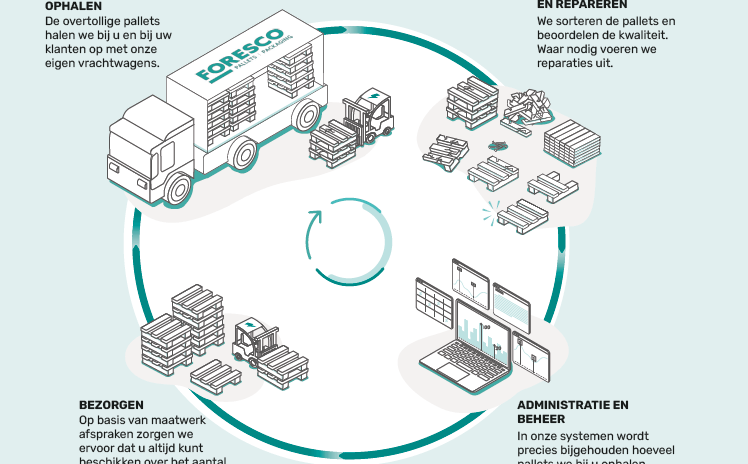
PPWR: European Regulation on Packaging and Packaging Waste
The Packaging and Packaging Waste Regulation (PPWR) is the successor to the current EU Packaging and Packaging Waste Directive (EU) 2018/852. This regulation introduces stricter rules throughout the entire lifecycle of packaging: from the design of sustainable and recyclable packaging to reducing empty space, setting reuse targets, and further limiting or banning single-use packaging.
What does this mean for packaging companies?
The PPWR aligns seamlessly with the goals of the European Green Deal and the Circular Economy Action Plan, aiming for climate neutrality by 2050. Under the PPWR, pallets are classified as transport packaging. The new regulation sets ambitious reuse targets for packaging, including pallets.
While the regulation outlines the broad framework, many details will be defined later through implementing acts. For example, standards for certain packaging formats or calculation methods for recyclability are still under development. Member states will also need to establish and refine systems in the coming years to monitor packaging materials and encourage reuse.

Packaging prevention
Packaging companies will need to reconsider the design of their packaging, looking at material usage, material choice, recyclability percentage, and potential for reuse. Some specific (plastic) packaging types will be banned. Additionally, the amount of empty space (or air) within packaging will be legally limited to a maximum of 50%.
From 40% to 70% reuse
The reuse targets are already clear: by 2030, 40% of all transport and product packaging must be effectively reused. By 2040, the EU aims for 70%.
Companies that use transport packaging internally between their own sites within Europe 100% reusable packaging from 2030 onwards. This reuse must take place within a reuse system such as an organisational, technical or financial arrangement that enables reuse in an open or closed loop.

Recyclability
As of 2030, all packaging must meet a minimum recyclability grade of A, B or C, with being the lowest allowed. From 2038, only A or B will be permitted. The exact method for determining these grades is still to be defined.
Labels
Each packaging unit will be required to carry a label with information on its material composition to support recycling. It will also indicate whether the packaging is reusable and if there is a take-back obligation. These labels will be introduced step-by-step between 2027 and 2029.

The impact for our customers
The ambitious PPWR targets for 2030 and 2040 represent significant changes—especially for companies that currently pay little attention to the lifecycle of their pallets. Companies that use pallets for internal transport between their own sites can have their own pool of pallets inspected and repaired by Foresco.
If you want to track your pallets easily and perform maintenance, a platform like Collect, Repair & Re-use (CRR) gives you full insight into how many pallets are at which location, what types they are, and what condition they are in. Even pallets sent to customers can be easily reused via the CRR platform. Your customer can report how many of your pallets they have, so Foresco can collect, repair, and reuse them again. This helps reduce costs and promotes a circular economy Finally, the platform also allows you to record your pallet usage in equivalent units, eliminating the need for separate administration.
Our control measures
At Foresco, we are closely following developments around the PPWR. Regardless of the upcoming legislation, we are already strongly committed to pallet circularity, both in open and closed-loop systems. This means we're not only ready for the future—we're already making a meaningful contribution to a more sustainable world today!
Curious about what we can do for you? Contact us.